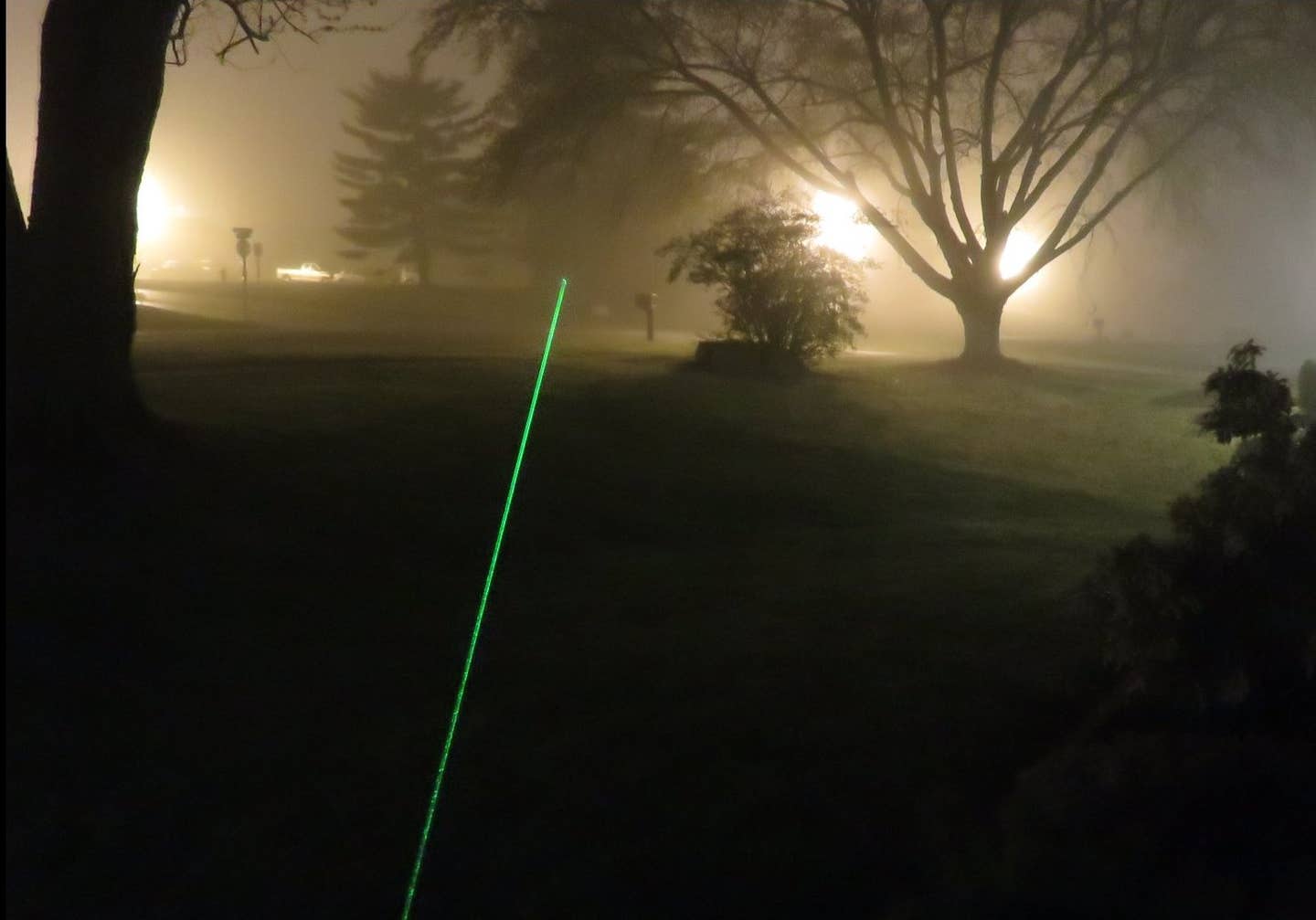Quantum discovery could help lasers penetrate fog, aid in surveillance and communication
Military surveillance and communication systems often face significant challenges due to adverse conditions such as fog.

Military surveillance and communication systems often face significant challenges due to adverse conditions such as fog, extreme temperatures, and long distances. These conditions can hinder the effectiveness of traditional technologies.
However, an innovative approach utilizing quantum technology is being spearheaded by an engineer at the McKelvey School of Engineering at Washington University in St. Louis to overcome these obstacles.
Jung-Tsung Shen, an associate professor in the Preston M. Green Department of Electrical & Systems Engineering, is at the forefront of this effort. With a two-year, $1 million grant from the Defense Advanced Research Projects Agency (DARPA) of the U.S. Department of Defense, Shen is developing a prototype of a quantum photonic-dimer laser. This advanced laser technology employs pairs of light particles, or photonic dimers, to produce a highly efficient and concentrated beam of light.
The core innovation of quantum photonic-dimer lasers lies in their utilization of quantum effects to bind two photons together. Photons, the particles that constitute light, typically travel at extremely high speeds and do not carry an electric charge. This makes it difficult for them to interact with one another or to be manipulated.
However, Shen’s lab has discovered that by using quantum mechanics to bind two photons of different colors into a photonic dimer, the combined entity behaves like a single blue photon. This entanglement between the two photons has the potential to revolutionize applications in communication and imaging by offering unprecedented capabilities.
“Photons encode information as they travel, but their journey through the atmosphere can be highly damaging,” Shen explained. “When two photons are bound together, they can protect each other, preserving some of the phase information despite atmospheric interference.”
Related Stories
The two-color dimers developed by Shen's team can be tailored to specific atmospheric conditions, such as fog, leveraging a unique property of quantum mechanics known as quantum entanglement. Quantum entanglement is a phenomenon where particles become interconnected in such a way that the state of one particle is directly correlated with the state of another, regardless of the distance between them.
“We are trying to exploit the property of entanglement to achieve something innovative,” Shen said. “The possibilities offered by entanglement are vast, and we are only scratching the surface.”
Previously, Shen received funding from the Chan Zuckerberg Initiative to develop similar technology for deep brain imaging. By implanting fluorescent molecules in the brain and using photons to excite them, researchers can gather detailed information about the brain’s structure. This experience has paved the way for Shen to explore further applications in telecommunications, quantum computing, and military uses supported by DARPA.
Shen’s team, which includes graduate student Qihang Liu and collaborators from Texas A&M University’s Institute for Quantum Science & Engineering, is set to introduce quantum photonic-dimer laser methods that will allow the creation of different states of two-color dimers at an unprecedented rate of 1 million pairs per second.
“The unique aspect of this project is its dual focus on generating novel strongly correlated quantum photonic states and developing the theoretical framework and advanced algorithms for their efficient detection,” Shen noted. “This has the potential to revolutionize quantum imaging and communication.”
By pushing the boundaries of what is possible with quantum photonic-dimer lasers, Shen’s research could lead to significant advancements in military technology, offering new solutions to long-standing problems in surveillance and communication. The protective properties of photonic dimers against atmospheric interference make them a promising tool for enhancing the reliability and efficiency of these systems under challenging conditions.
Moreover, the potential applications of this technology extend far beyond military uses. In telecommunications, quantum photonic-dimer lasers could enable faster and more secure data transmission. In quantum computing, they could contribute to the development of more powerful and efficient computing systems. The ability to manipulate and detect photonic states with such precision opens up numerous possibilities for future technological advancements.
Shen’s research represents a significant step forward in the field of quantum photonics. By harnessing the power of quantum mechanics to develop new laser technologies, his team is paving the way for innovations that could transform a wide range of industries. The DARPA-funded project not only aims to solve immediate challenges in military applications but also sets the stage for broader impacts on communication, imaging, and beyond.
As Shen and his collaborators continue to explore the potential of quantum photonic-dimer lasers, they are contributing to the growing body of knowledge in quantum science and engineering. Their work exemplifies the innovative spirit of the McKelvey School of Engineering and its commitment to advancing technology through cutting-edge research.
With the support of DARPA, this pioneering research is poised to make substantial contributions to the fields of quantum computing, telecommunications, and beyond, offering new solutions and capabilities for the future.
For more science and technology stories check out our New Innovations section at The Brighter Side of News.
Note: Materials provided above by Optica. Content may be edited for style and length.
Like these kind of feel good stories? Get the Brighter Side of News' newsletter.
Joshua Shavit
Science & Technology Writer | AI and Robotics Reporter
Joshua Shavit is a Los Angeles-based science and technology writer with a passion for exploring the breakthroughs shaping the future. As a contributor to The Brighter Side of News, he focuses on positive and transformative advancements in AI, technology, physics, engineering, robotics and space science. Joshua is currently working towards a Bachelor of Science in Business Administration at the University of California, Berkeley. He combines his academic background with a talent for storytelling, making complex scientific discoveries engaging and accessible. His work highlights the innovators behind the ideas, bringing readers closer to the people driving progress.



